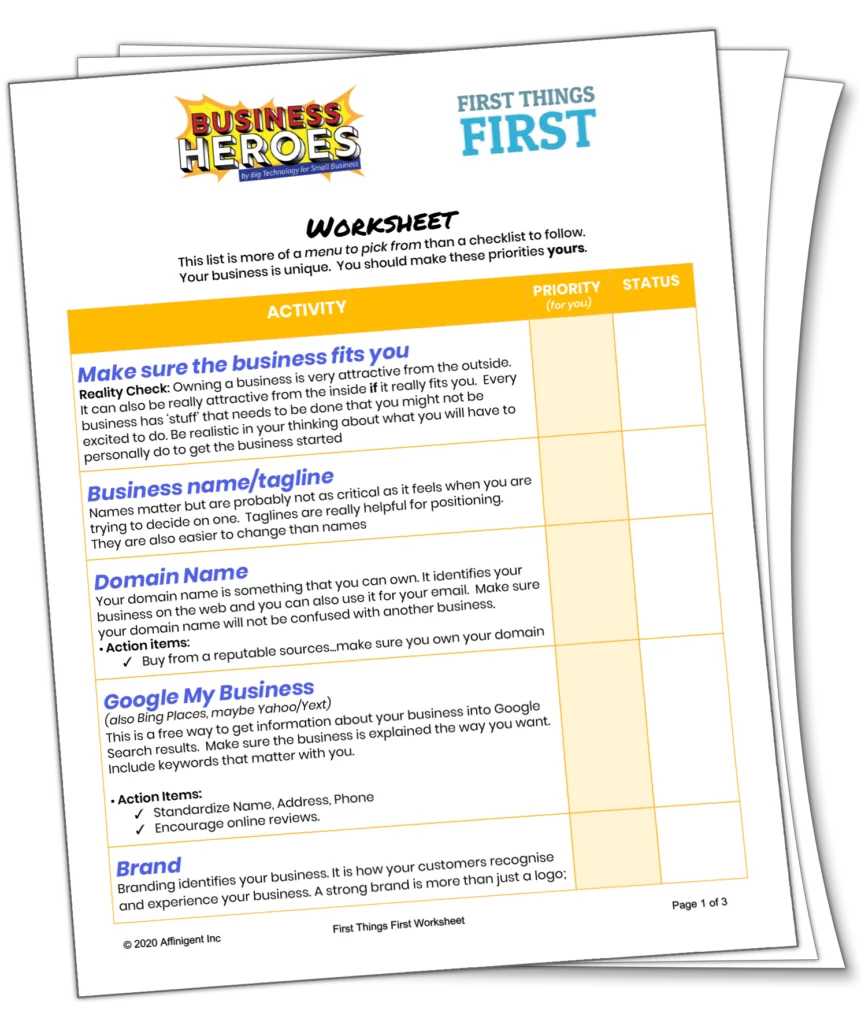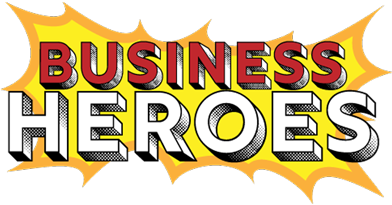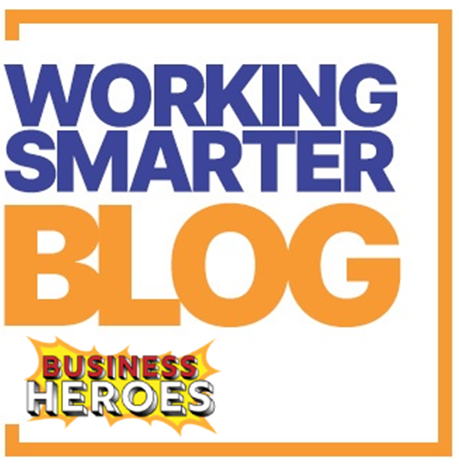Getting started is hard.
You have a bunch of ideas in your head.
There are some things you are looking forward to doing.
There is also a list of things that you know you need to take care of
The lists in your head can be both exciting and overwhelming.
There is no ‘right’ way to move forward. The only ‘right’ thing to do is to get started. Here is a list of things to consider. The order is not crucial. Getting started is the crucial item..
I organize this list into 3 sections:
Second, make sure you have a solid plan to communicate with your audiences.
Third, have a system to stay on track as your activity level ramps up.
Getting Started Action Items
Make sure the business fits you
Business name/tagline
Names matter, but are probably not as critical as it feels when you are trying to decide on one. Taglines are really helpful for positioning. A tagline is also easier to change than a company name.
Domain Name
Your domain name (like affinigent.com or bigtechnology4smallbusiness.com) is something that you can own. It identifies your business on the web and you can also use it for your email.
Google My Business
(also Bing Places, maybe Yahoo/Yext) This is essentially a free web page that Google wants people to see. Take advantage of it.
Brand
Branding identifies your business. It is how your customers recognize and experience your business. A strong brand is more than just a logo; it’s reflected in everything from your customer service style, staff uniforms, business cards and premises to your marketing materials and advertising.
Unique Selling Proposition
A unique selling proposition is a statement you choose to embody that differentiate your products and your brand from your competitors. Don’t be like everyone else. Be unique.
Stories
Stories can define your brand, get customers on your side and build your team. Know your story from the start so you can share it at every opportunity.
One Page Website (more if appropriate)
Your website is your rock. It is home base and an environment that you can totally control, unlike social media and directories. Unless your business is actually web based, you should start with a simple website that tells your essential story. There should be a Call to Action that powers your primary lead source (phone call, visit, email, etc.)
Facebook Page, LinkedIN Profile & Company Page
These are high profile listings. You need to have basic info about your company on these pages. They should link to your website (your rock). Lots of posts and a posting strategy are not critical yet, just show up with the basic information about you.
Blog and Social Media Posting
Sharing content is key to developing relationships with customers and moving along their journey to Know, Like and Trust you.
Directories on the Internet
There are over 100 directories to consider. We have a list and some guidelines on selecting the right directories and getting your listing setup properly.
Metrics
You should decide on a few measures to track to get started. Monitoring your metrics helps you allocate resources and grow. Website visitors, Google My Business activity, and social media activity are excellent places to start.
What’s Next?
Get the Worksheet with more details about the startup action items

Getting started is crucial because taking action is the first step towards turning your ideas into reality. It helps you gain momentum, learn from experience, and make progress towards your goals.
When selecting a business name, consider its relevance, memorability, and availability as a domain name. While names do matter, don’t get too caught up in the decision-making process. Taglines can also help position your business, and they are easier to change if needed.
Branding plays a crucial role in how customers perceive and recognize your business. It encompasses various elements such as your logo, customer service style, marketing materials, and more. Developing a strong brand helps differentiate your business from competitors and creates a consistent experience for customers.
Your website serves as a central hub where you have full control over your business’s online presence. It should provide essential information about your business, tell your story, and include a call to action to encourage customer engagement. A one-page website is a good starting point, although additional pages may be added as needed.


